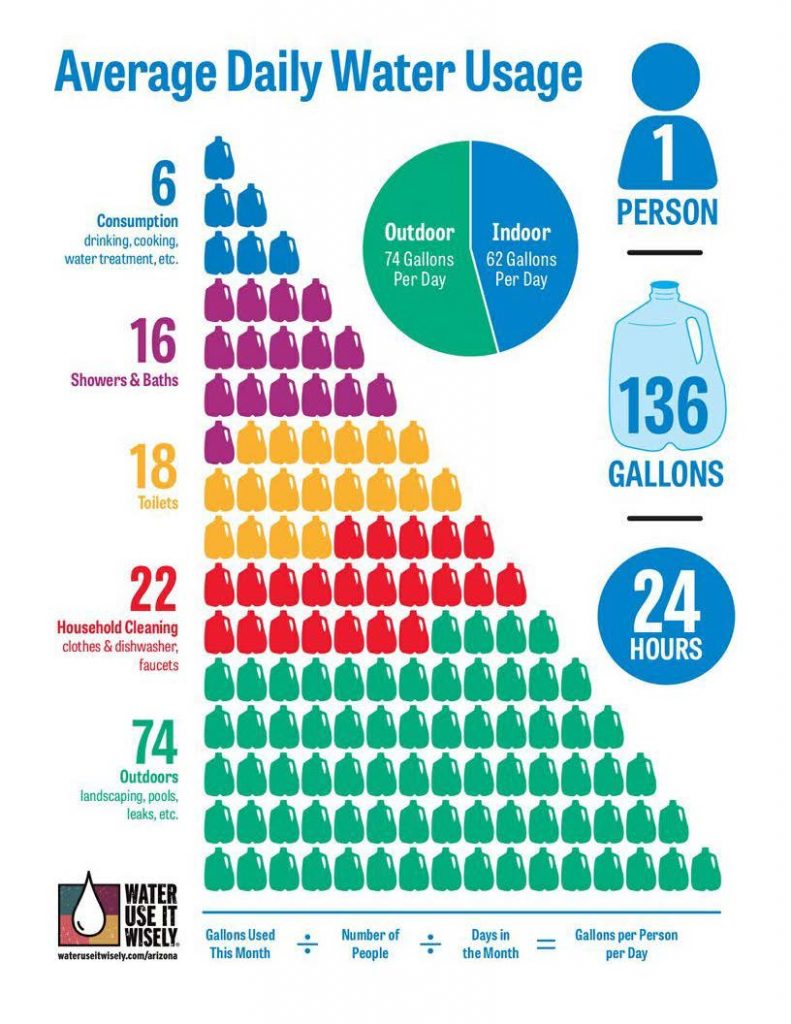More Efficient
When it comes to efficiency in the workplace, I'm not here to say you should become some sort of worker robot drone. (Paper pushing and glazed-over eyes? No thank you.) But there are ways to be more efficient at work that can make you just as productive as one.
That's because being efficient doesn't have to mean a boring, hyper-focused workday. It simply means re-focusing your schedule, spending the day the right way, and actually getting stuff done. In fact, if the world would let you, I'm sure you could get all your work done in a few days and then pack up for some sort of awesome four-day weekend. Studies have even shown that this would be an ideal scenario, as working too much (as in, over 50 hours a week) is incredibly counterproductive.
As Bob Sullivan said on CNBC.com, 'Research that attempts to quantify the relationship between hours worked and productivity found that employee output falls sharply after a 50-hour work-week, and falls off a cliff after 55 hours — so much so that someone who puts in 70 hours produces nothing more with those extra 15 hours, according to a study published last year by John Pencavel of Stanford University.'
Efficient definition: 1. Working or operating quickly and effectively in an organized way: 2. Working or operating. Driver feedback devices can help you drive more efficiently. A recent study suggests that they can help the average driver improve fuel economy by about 3% and that those using them to save fuel can improve gas mileage by about 10%. Sensible driving is also safer for you and others, so you may save more than gas money. How to Make a Fireplace More Energy Efficient. Energy costs are soaring! While homeowners are frantically looking for ways to save money, most don't realize that their dollars are readily escaping through one of the biggest holes in their.
Sadly, I don't think your boss will let you leave early. One can dream, but until that day comes, here are some ways to be more efficient at work. At the very least, you can get stuff done on time (or even early!) and then kick back in the break room.
1. Prioritize Your To-Do List
Start each morning by prioritizing your to-do list. This will probably mean moving those dreaded difficult tasks to the top (you know, the things that actually have to get done), and moving all the fluff things to the bottom. Emails can wait. Sharpening all your pencils can wait. But finishing your project? Not so much.
2. Stick To Your Routine No Matter What
I know, it might sound boring, but try to make everyday kind of the same. Doing so will get you into a groove, which will really help you get more done. As Hallie Crawford said on Money.USNews.com, 'We are creatures of habit, and so are our brains. When we establish routines, we can carry out tasks faster since we don't have to 'think' about the task — or prepare for it — as much, and can work on autopilot.'

3. Resist The Urge To Multi-Task
We all think we can multi-task, but it's actually next to near impossible. That's because, instead of multi-tasking, we are simply doing multiple things one at a time. As Thai Nguyen noted for the Huffington Post, '... we jump-around rather than juggle. The problem is ending up with too many open projects, and spreading yourself too thin.' So start focusing on one project or task, and finish it before moving onto something else.
4. Take Advantage Of Your Procrastination
Ever notice how a looming deadline can suddenly bless you with the ability to work? This procrastination tactic is called the Parkinson Law, named after naval historian Cyril Northcote Parkinson, who said, 'If you wait until the last minute, it only takes a minute to do.' According to Nguyen, “The law provides great leverage for efficiency: imposing shorter deadlines for a task, or scheduling an earlier meeting.' Just make sure you find that sweet spot, Nguyen suggested, since rushed work can be a recipe for disaster.
5. Cross Things Off Your To-Do List
As soon as you finish a task, triumphantly cross it off your to-do list. According to an article on Fortune, 'This not only will give you a sense of accomplishment as you tick off completed tasks throughout the day, but it can also help to assess patterns in productivity.' I mean, do you really get anything done in the morning? This method will help you figure that out.
6. Keep Track Of Time
Another way to track your efficiency is to log the time you spend on each project. As Crawford said, 'Log your time for two weeks, writing down how much you spend on each task and activity at work. Track everything from emails to lunch to conversations with workmates to work projects and breaks. This will allow you to see where the majority of your time is being spent and then make any necessary adjustments.'
7. Make Sure You Take Breaks
Efficiency doesn't mean staring unblinkingly into your computer from 9 a.m. to 7 p.m. A well-deserved break or two isn't a waste of time, but an incredibly necessary part of any good work day. As Nguyen noted, '... our brain’s natural rhythms of attention means we can focus for up to 90 minutes, then need roughly 20 minutes rest. Strategic breaks equals efficient work.' So yes, you can and should take multiple trips the break room.
8. Hide Your Phone
If my phone is in sight while I'm working, I can't help but check it every time a text rolls in. (It's a problem, I know.) Obviously this is incredibly distracting, and not exactly the makings of an efficient work day. That's why all us phone addicts should hide the thing out of sight when trying to get things done. Out of sight, (kind of) out of mind.
9. Disable Your Alerts
To help make your phone even less tempting, disable the alerts ASAP. That way you can leave it on your desk, in plain sight, without being as distracted. For those who need their phone for work, this might be the best option.
10. Take Good Care Of Yourself
Nodding off at your desk, or daydreaming about Chipotle, are not the best uses of your time. That's why it's so important to take good care of yourself if you want to be an efficient, working machine. Take a note from Fortune.com, and start eating, sleeping, and waking at the same time each day. That way your body will know what's up, and when it's time to get to work.
11. Actually Enjoy Your Days Off

Thoroughly enjoying your weekend is a total must. Not only is it highly necessary after a long week of focusing hard, logging your time, and sticking to your routine. But it's actually pretty darn helpful when it comes to being efficient again come Monday. As Crawford said, '...respect your day off. If you take the weekends off, don't work unless it's absolutely necessary. Enjoy your time with friends and family doing activities that have nothing to do with work. This will allow you to return to work feeling refreshed, happy and ready to take on a new workweek.'
It's really not any more difficult than that. Focus on how you spend your time, and make sure you spend it wisely, and you'll be checking things off your to-do list like crazy.
Images: Pexels (12)
Depending on whom you ask, fusion power is either already here (but no one will purchase my sekrit design!), never going to happen (so stop wasting money!), or a difficult problem that might be a partial solution to an even more difficult problem. The last, being the view of scientists who actually work in the field, is often lost in all the noise.
Out of this fog of discussion, a passel of papers emerged recently, all focused on a proposed fusion project: the SPARC tokamak. One of the surprising things about SPARC is its size. Coming in at just over 3m across, SPARC will be smaller than currently operating tokamaks, like JET, which is nearly 6m across. ITER, currently under construction in France, is over 12m across. Yet SPARC and ITER are projected to have about the same performance. Both are expected to produce more energy from fusion than the direct input energy, though neither is expected to produce useful power.
So why the difference? And what does this latest batch of papers tell us about the design?

Molten magnets and mad safety officers
In tokamaks, how you use it doesn’t matter; size matters. These devices confine a hot plasma using a donut-shaped magnetic field. One of these two needs to be big for the tokamak to work. If you can make a stronger magnetic field, you can get away with a smaller tokamak and still get the same amount of output power.
The magnetic fields are generated by coils that carry very large currents. Generating the current is not really a problem, but carrying it in a conductor is. If you use something like copper, then the power lost to the resistance of the wires will be huge, as power loss increases with the square of the current. Even worse, as the copper heats up, its resistance increases, leading to more heat generation, a shiny puddle of liquid copper, and a severely unimpressed safety officer.
Superconducting magnets are pretty much the only option. But all superconductors have a maximum current density. Exceed that and the conductor will start to show some resistance. Unfortunately, the materials from which superconductors are made are often poor normal conductors. Failing to obey the laws of physics here will lead to an apoplectically angry safety officer and a bespectacled accountant trying to bill you for a large amount of helium and, possibly, a new building.
Once you know the maximum current you can carry, the magnetic field can be determined. From that, you choose how much power you wish to generate via fusion, and that sets the size of the tokamak. (Approximately; there are a few missing details in this process.)
AdvertisementGiven this knowledge, and given that ITER was designed with state-of-the-art magnets, you’d have to conclude SPARC had trouble doing this math. Except ITER was designed in the 1990s and 2000s. Since then, high-temperature superconductors that have much better performance have been discovered and brought into commercial production. Using these modern superconductors, the magnetic-field strength can be doubled, allowing the size of the tokamak to be reduced considerably.
The future’s so bright?
While both ITER and SPARC are entering unknown territory, there is quite a bit of difference between the two projects. ITER has been modeled and studied to the nth degree. Teams of scientists have worked on every aspect for decades to try to predict the performance of ITER. SPARC, as a smaller device, cannot simply transfer the numbers and scale everything down by a factor of two. The recent papers try to address the challenge of modeling the new design.
They show that, fundamentally, SPARC seems sound. The plasma should reach the right conditions. The plasma should be able to maintain itself—it can carry a current that generates a magnetic field that helps confine itself—for about the same time as similarly sized tokamaks. That seems OK.
On the other hand, instabilities are likely to be exacerbated because the plasma is denser. In particular, phenomena called edge-localized modes could develop faster and be harder to suppress (or reduce). These instabilities occur at the edge of the plasma and, at worst, lead to hot plasma exhausting itself on the vessel walls. Other instabilities are disruptive in different ways, leading to reduced confinement and lower temperatures, so these generally need to be controlled.
These instabilities, if not controlled, can result in massive currents flowing in the vacuum vessel with extensive damage. This is the sort of scenario that gives ITER engineers nightmares, and the situation is not much different for SPARC: large currents, the whole machine jumping off its foundations, and other enjoyably dynamic disasters are possible. However, SPARC also seems to behave similarly to existing tokamaks, meaning that the predicted instabilities should be controllable.
A diverting puddle of tungsten
Where things really seem marginal is in the diverter. In every tokamak, there is a null point in the magnetic field. Particles don’t just leak through the null—they spray like a firehose. The diverter is the chosen place where this spray of particles hit a surface.
Even in current-generation tokamaks, the diverter materials don’t survive very long. In ITER, the diverter is going to be subject to conditions that are even more extreme. SPARC may make ITER look like warm milk.
Under their most pessimistic scenario, tungsten bricks will cyclically melt and recrystallize. During this process, tungsten atoms will probably penetrate to the core plasma, cooling it, and may even quench the fusion reaction. Carbon, an alternative, is a sacrificial surface that doesn’t kill the plasma. So carbon may end up being used in SPARC so that they can demonstrate that fusion works.
But the end result of using carbon will be organic molecules with a high percentage of tritium—not something to be messed around with. And definitely not something that should be considered for a commercial reactor.
 Advertisement
Advertisement Endgame
The success or failure of fusion rests on three pillars: science, engineering, and economics. ITER and SPARC will complete the science pillar. Assuming that we understand the physics pretty well—and I think we do—both tokamaks will show that fusion reactors that can produce useful electricity are possible. ITER will go a step further than SPARC and demonstrate many of the engineering requirements as well. Tokamaks will need to be cleaned robotically, for instance, and this is in the plan for ITER. The results from ITER can be transferred to future fusion reactors.
In any event, with sufficient work, the engineering case will probably be made. The economic case is much less certain. Most fusion researchers acknowledge this. The ITER-style large tokamak is a similar investment to the nuclear plants of the 1950s. And the payoff (if it ever arrives) is on a similar time scale. No one is sure who, if anyone, is prepared to risk that much money on that prospect. SPARC, by reducing the scale considerably, makes the economic case better by making the time scales shorter.
Another Word For More Efficient
Weirdly, in retrospect, this makes the delays in ITER a lucky accident. Imagine if ITER had broken ground in 1990. By 2000, ITER would have been operating. The physics would have been worked out. The engineering path would have been clear. And the economics would have also been clear. In such an environment, the push for SPARC might never have come.
More Efficient Synonym
Journal of Plasma Physics, 2020, Special Issue